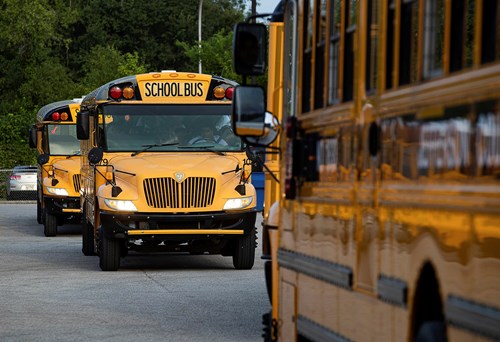In many U.S. communities, most of the check a resident writes for property taxes may not go to help build the local high school’s new performing arts center. It’s highly unlikely the local high school can continue to allocate funds for such projects, not with the number of illegal migrant students it now must educate.
Estimates from research at the Center for Immigration Studies say somewhere between 700,000 and 1 million new migrant children have entered the United States since 2022. Most of them, says a CIS spokesman, are not arriving ready to learn.
 “Nearly all of those children speak some language other than English. In fact, it's doubtful that many of them have any fluency in English at all," Andrew (Art) Arthur, the resident fellow with CIS, said on Washington Watch Tuesday. "Most of them have suffered from poor levels of education prior to reaching the United States, and now they are flowing into our public-school systems.”
“Nearly all of those children speak some language other than English. In fact, it's doubtful that many of them have any fluency in English at all," Andrew (Art) Arthur, the resident fellow with CIS, said on Washington Watch Tuesday. "Most of them have suffered from poor levels of education prior to reaching the United States, and now they are flowing into our public-school systems.”
As pointed out during the interview, school districts have no choice but to receive the children.
In 1982, in the case of Plyler v. Doe, the Supreme Court ruled that districts must provide free public education to undocumented immigrant children. The case originated when four families of illegal Mexican children sued the Tyler (Texas) Independent School District, which had denied enrollment of the children based on their immigration status.
The decision has been reaffirmed in subsequent courts including the Supreme Court itself, which in 2013 chose not to review a case involving an Alabama law that sought to restrict education benefits to illegal students.

The financial burden for school districts, funded primarily by local property taxes, is enormous and growing, Arthur told show host Tony Perkins.
“The number is an average of about $15,000 per pupil, and when you talk about English as a Second Language learners you can add about 20% to that, a total of about $18,000 per student,” he explained.
“Washington doesn’t really pay much of the funding for public schools in the United States at all. Most of that comes from ad valorem taxes – property taxes that all of us who own property in the United States pay. We know that about $800 billion in local tax money is paid for public schools nationwide annually, and that equals out to about the $800 billion in property taxes that localities receive.”
Migrant children means hiring more staff
Schools are forced to hire English as a Second Language (ESL) staff to accommodate students who don’t speak the language. Those schools have to purchase textbooks in other languages, and they have to make physical changes just to create classroom space or have desks for the children.
According to Arthur, many of the new arrivals suffer not only from the language barrier but from their previous education experiences.
“When you consider the fact that most of these children haven’t had a good education up to this point, there’s a lot of remedial education that takes place in trying to mainstream these students into the system,” he said.
The resources and attention focused to illegal students create one more challenge for school districts – a big one – as they try to improve their own standing. U.S. test scores in math, reading and science have lagged behind many other countries in recent years.
“Public-school teachers and … administrators are going to move heaven and earth for any kids that they get, but these [migrant] kids are going to require a lot of special accommodations – which means there’s going to be less time paid to legal resident kids who speak English and United States citizen kids who have been raised in the language,” Arthur elaborated.
Feds just drop these kids into the schools
For most school districts, planning is done far in advance of the current school year – as much as five years out, according to Arthur. So, the influx of migrants is a “significant impediment” for schools – and one the Biden administration refuses to address, he added.
 “There’s no way for school districts in this country to anticipate that next year they’re going to get an additional 200 migrant children because the Biden administration really isn’t very forthcoming about telling us how many migrant children are coming and doesn’t do anything at all to accommodate them where they land.”
“There’s no way for school districts in this country to anticipate that next year they’re going to get an additional 200 migrant children because the Biden administration really isn’t very forthcoming about telling us how many migrant children are coming and doesn’t do anything at all to accommodate them where they land.”
Schools could soon feel the pinch from their base as well if property owners opt against passing a proposed tax increase because they suspect not enough of it will benefit their children.
“Every now and again your locality raises property taxes because they know they’re going to have those additional costs. [But] now we’re talking about a huge number of people,” Arthur stated.







